| In its time, this building was considered to be avant-garde--illustrating a kind of modernist classicism--specifically seen in its structure and use of concrete frame. It modernism can also be related to the fact that the debut of the radical Le Sacre du Printemps was held here in 1913. The theater is also now seen to be one of Perret's seminal pre-war works. Although several architects were engaged at various points to design this theater for opera, dance, and music, Perret's design (or modifications of earlier architects' designs) won the day. Scholars today still debate the exact attribution. |

|
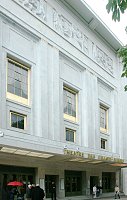
|
The pure facade (except for the adornment of the relief sculpture by Bourdelle)While the auditorium inside is circular, the exterior does not mirror the structure. In addition, the reinforced concrete (Perret's signature material) is clad in white marble. |
| |
|
| The building is not quite symmetrical. The right corner is rounded with three reliefs above the side doors whereas the left bay continues the planar line of the center--with two relief panels rather than three. The heavy cornice and simplified pilasters also connect the building with classical precedents. |
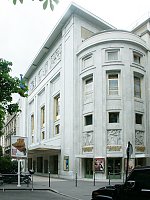
|
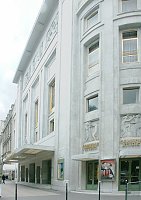
|

|
| |
|
Sculpture by Emile-Antoine BourdelleBourdelle's frieze crowns the facade and five relief panels are situated above the five side doors--two on the right and three on the rounded corner. All celebrate the arts. The top frieze depicts Apollo and the nine muses. |
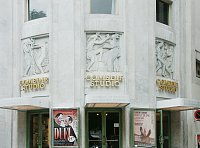
|

|
| |
|

|
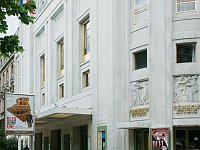
|
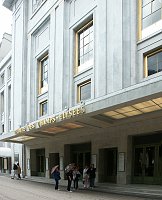
|
| |
|

|

|


 Click here to return to index of art historical sites.
Click here to return to index of art historical sites.
 Click here to return to index of artists and architects.
Click here to return to index of artists and architects.
 Click here to return to chronological index.
Click here to return to chronological index.
 Click here to see the home page of Bluffton University.
Click here to see the home page of Bluffton University.

